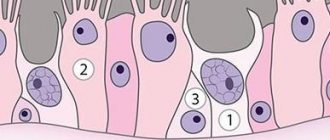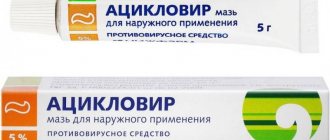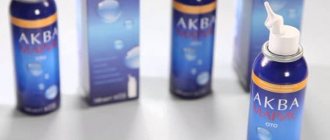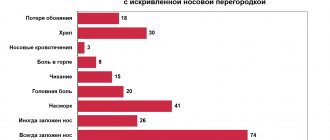The article was checked by an otolaryngologist
Natalya Aleksandrovna Naumova, Medis Clinic
Cauterization of vessels located in the nose means carrying out medical procedures aimed at eliminating regular bleeding caused by various reasons - trauma, drying out of the mucous surface, disturbances in the functioning of the circulatory system, hormonal instability.
Watch free online federal channels, watch via the link TV online
Algorithm for the procedure
Carrying out a medical procedure of coagulation or cauterization has a certain algorithm, independent of the type of equipment and method of exposure. The coagulation stage includes:
- Examination by a medical specialist to identify pathology.
- The otolaryngologist selects the most appropriate treatment method, taking into account the patient’s characteristics.
- Carrying out the procedure - the doctor inserts cotton swabs or devices with laser or electrical radiation into the nasal turbinates.
The procedure takes from 10 to 30 minutes and depends on the chosen method of operation. The medical procedure is carried out without severe pain and is easily tolerated by a large number of patients.
After coagulation, a number of recommendations must be followed in order to quickly restore the mucous membrane:
- Limiting nasal tension;
- The crusts that form in the nose cannot be removed independently;
- Elimination of nose blowing;
- Using sea buckthorn oil and petroleum jelly to moisturize and disinfect mucous membranes.
Indications and limitations for coagulation
Since cauterization is a method of direct impact on the nasal mucosa, the procedure is performed only if there are indications for:
- Regular severe nosebleeds;
- Chronic rhinitis with complications in the form of mucosal atrophy;
- Sinusitis in the chronic phase;
- Pathologies of the nose that cause difficulty breathing;
Cauterization of nasal vessels is carried out after conservative treatment, which did not lead to positive results and in the absence of a number of contraindications:
- Infectious lesion of the body;
- Deterioration in general health;
- Bleeding, the nature of which is pathological processes in the body or the effects of medications.
Cauterization of the nasal mucosa is carried out only as prescribed by the doctor, taking into account the characteristics of the patient’s disease, the individual characteristics of the body, in accordance with the rules for the chosen coagulation method.
How is the operation to cauterize the nasal mucosa performed?
The surgeon performing the operation uses a diode laser, which emits beams of a certain power. In this case, the laser device operates either in pulsed or continuous mode. Under the influence of light, the changed surface of the nasal mucosa is removed.
This surgery is associated with a very low risk of complications. The specific risks of turbulence suppression that you should be aware of are. Nosebleeds or nosebleeds are normal for a few days after surgery. Infection is rare, but almost all patients feel as if they are starving. Excessive reduction of the turbine will result in a dry, blocked and very uncomfortable nose. This complication is avoided by conservative surgery.
- Heavy bleeding is extremely rare and may be a sign of an underlying bleed.
- True infection is associated with a throbbing sinus headache.
General anesthesia is best for the patient to remain asleep for about 15 minutes.
How does this work? The fact is that the cells of the human body contain two-thirds of water. High energy radiation affects water cells, which leads to a slow process of evaporation of water tissues. As a result, the hypertrophied mucous membrane is locally removed. In addition, a coagulation film is formed that completely covers the nasal mucosa, preventing bleeding from occurring and preventing infection from reaching sites of tissue injury.
Dr. Wallace performs turbulent cautery through each nostril. It produces a linear electrocautery burn along each lower turbine in multiple locations. There should not be significant pain, but there will be quite severe nasal congestion for 7-10 days. You can use decongestant nasal sprays or tablets, but they will only be partially successful.
You should avoid any vigorous physical activity for two weeks. Swimming after this surgery is fine as long as you don't spend too much time in the sun getting overheated as this can cause bad nosebleeds. Dr. Wallace will arrange your first post-operative office visit approximately 2 weeks after surgery. Your second postoperative visit will be approximately 6 weeks after surgery, when the turbines should be completely healed and maximum airway improvement should be evident, but it may take many months to obtain new nasal airflow samples.
Today, overgrown nasal turbinates are removed using the latest technologies using a laser. There are several types of surgery to cauterize the mucous membranes with lasers - submucosal removal, superficial, contact.
What are the advantages of laser exposure?
The advantages of laser cauterization are undeniable. The mucous membrane is either removed completely or only partially - only in the necessary areas. A runny nose is eliminated, not its symptoms. The operation does not last long - up to half an hour, and no preparation is required. There are no open wounds or bleeding vessels. Local anesthesia. The effectiveness is usually very high, and damaged tissues are quickly restored.
Most patients only have their first week of work. The cost of two post-op visits is included as part of the cost of the surgery. The vast majority of patients will be very pleased to experience minor discomfort with turbulent cautery. Within 4-6 weeks, breathing will be easier and sleep should be more refreshing. However, you have to remember that the nose is there to slow down the flow of air to condition the air, and we do most of our breathing through one nostril at a time.
Procedure technique and complications
This is a nasal cycle that changes approximately every 3 hours. This is more noticeable than usual in the first year after surgery. Turbine enlargement may require surgical reduction to improve nasal breathing. If your nasal turbines are too large, there are several ways to reduce them during surgery. With electric current, the turbine can be seated. Likewise, a laser beam can be used for this purpose. A mucous strip or piece of bone can be removed to make it smaller.
Otolaryngology is a medical specialty that combines both therapeutic and surgical focus. During the treatment of pathologies of the nasal area, various methods of influence are used. The method of cauterization of the nasal mucosa is intended to stop nosebleeds and can be prescribed for various forms of rhinitis. The appropriateness of its use is determined by the attending physician depending on the clinical situation. For the cauterization procedure, numerous types of chemicals (in particular, silver nitrate), as well as laser radiation, can be used. How is cauterization of the nasal mucosa performed? Is there a risk of unwanted consequences? The patient should know about the advantages and disadvantages of the method.
In particular, if an air-filled cavity in the turbine causes a thickening, this area is removed. Lateral displacement of the shell after detachment of the skeleton is also possible. Often after a surgical procedure it is necessary to insert a nasal packing, which can be removed after two days.
Possible expansions of the operation
Unexpected results or complications may require extension or modification of the surgical procedure. Organs and structures near the surgical site may be damaged during surgery. Bleeding, bleeding, and bruising may occur, among other things. This can lead to inflammation, impaired wound healing and scars. The nasal concha and septum may exist. Smell and nasal breathing may be limited.
Types of coagulation
The choice of method for nasal cauterization depends on the identified pathological processes and the individual characteristics of the patient. The essence of the procedure is a thermal or chemical effect on the mucous surface, leading to clogging of blood vessels and stopping bleeding. Otolaryngologists use several types of coagulation:
- Laser exposure;
- Using a radiosurgical knife;
- Cauterization with silver.
There are surgical methods using electricity and nitrogen. Electrical influence involves the use of a current of a given value on the capillaries of the nose. Cryocoagulation is carried out by applying liquid nitrogen to the problem area, avoiding the formation of scars.
Laser cauterization
Cauterization of nasal capillaries with laser radiation is most effective for rhinitis of various forms and chronic bleeding. Surgical intervention is carried out using local anesthesia in the form of a compress based on Adrenaline or Lidocaine.
After the anesthesia effect is achieved, a special device with laser radiation is inserted into the nasal cavity. The impact occurs first on the area around the lesion, and then on the lesion itself.
The operation is usually performed on an outpatient basis without the need for hospitalization. After coagulation, the patient is prescribed the use of ointments “Solcoseryl”, “Actovegin”, which accelerate the process of restoration of the nasal mucosa. The laser coagulation procedure has a list of pronounced advantages:
- Damage to the soft tissues of the nose is excluded;
- Highly effective for various types of runny nose;
- Elimination of bleeding wounds;
- Eliminating the possibility of infection;
- Painless;
- The procedure is carried out in a short time without preliminary preparation;
- Minimal recovery period.
Radiosurgical knife for coagulation
This method is an innovative technology that avoids damage to the skin and soft tissues. Cauterization with a radiosurgical knife is a method with the shortest recovery period, eliminating the development of complications and the need for additional therapy.
The process of coagulation with a radiosurgical knife in the form of a thin wire involves the effect of electric current on cells, promoting their expansion and evaporation of fluid. After the procedure, there is no swelling, pain, or inflammatory processes. A significant disadvantage of the procedure is its rarity and high cost, since not every medical organization is equipped with such equipment.
Cauterization with silver
An effective method for regular bleeding is “Silver” cauterization, which can eliminate the cause of the pathological condition quickly and without pain. The area of the nasal mucosa to be cauterized is treated by a medical specialist with a silver solution.
After some time, the treated area becomes covered with a crust. A few days after cauterization with silver, the crust will disappear on its own. Touching or trying to tear off the crust is unacceptable, as such actions can provoke resumption of bleeding.
Methods for cauterizing blood vessels in the nose
There are various coagulation methods. They all have their advantages and disadvantages. Depending on the location of the vessels that require cauterization, their number, the size of the nasal passage, the degree of distance from the nasal opening, the doctor prescribes one or another method. An experienced specialist can suggest a coagulation method, guided by the various rules of each technique:
- Cauterization with silver. This method is classic. In modern medicine it is rarely used: it is quite painful and causes complications. The essence of the technique is to use a solution of silver nitrate with chromic anhydride and trichloroacetic acid. The procedure is used to cauterize the vessels of the anterior sections of the nose and turbinate; this option is indicated for low-intensity bleeding. The basic rule when applying the solution: asymmetry. Application to symmetrical areas, especially in the area of the cartilaginous septum, can lead to the formation of synechiae (this is a connection of tissue, bones, or cartilage that forms bridges in the nasal cavity).
- Using a laser. One of the most popular methods. Burning out blood vessels does not have negative consequences and is absolutely harmless. The method is based on the use of a laser. The mucous membrane recovers quickly. The only drawback of the method is its cost.
- Electrocoagulation method. The name suggests the method of cauterization - electric current. The risk of injury to nearby tissues is minimal. Specific values are selected individually for each patient and assigned to a special device.
- The cryocoagulation method involves using liquid nitrogen on the damaged area. The gentle action promotes rapid regeneration of blood vessels and mucous membranes, minimal risk of bleeding and scarring. The method is expensive - this is its disadvantage.
- Radiosurgery or gamma knife is an innovative method. It is carried out only with special medical equipment. The remission period is very short, compared to other methods, it is the most harmless and the most expensive.
Possible complications after the procedure
After cauterization of nasal vessels, consequences and complications occur extremely rarely. In some cases, unpleasant symptoms occur:
- Nasal congestion is caused by a sinus injury caused by chemical exposure.
- The pain syndrome is most pronounced after coagulation with silver or electricity.
- Patients who get rid of crusts on their own suffer from nosebleeds.
A successful surgical procedure will not bring any unpleasant consequences if the necessary measures are taken by a medical specialist and the patient follows all recommendations.
Rehabilitation activities
After surgery on the nasal cavity, the patient needs a recovery period and constant monitoring by an otolaryngologist. At the end of the coagulation procedure, hemostatic measures are carried out in the form of installing a tampon or a special sponge in the nose.
Rehabilitation measures after surgical treatment are as follows:
- Taking into account the situation, a blood infusion or therapy for high blood pressure is carried out;
- The installed tampons and sponges are removed by a medical specialist 3 to 7 days after the operation;
- Taking vasoconstrictors and wound healing agents prescribed by the doctor;
- Moisturizing the mucous membranes of the nasal concha.
To avoid undesirable consequences, the patient must strictly follow the instructions of the attending physician, refuse to visit the bathhouse or sauna, and drink alcohol and coffee.
How much does the service cost?
This procedure is offered by many medical institutions in Moscow. The price of cauterization varies depending on the level of the clinic and its pricing policy.
You can find out how much procedures in our clinic cost by calling the reception and +7 (926) 384-40-04 or on our website in the “Services and Prices” section.
Prices for ENT services provided by ENT doctors at our clinic compare favorably with prices for similar procedures in other private clinics in Moscow.
Please sign up for a consultation and come!
We are always happy to help you!
Make an appointment
Advantages of this type of service
- Effective treatments
- Professional equipment
- Certified specialists
Preventing nosebleeds
Preventive measures for nosebleeds are primarily aimed at identifying and eliminating the causes that cause this condition. The main provoking factors are a deviated nasal septum, neoplasms, fluctuations in blood pressure, injuries, the effects of medications, and dry air.
In addition to identifying the source of bleeding, it is necessary to take measures aimed at strengthening the vessels of the nose:
- A solution of half a teaspoon of salt and a glass of water is used to rinse the nasal passages;
- Vaseline and sea buckthorn oil are used to soften crusts that form in the nose;
- Regular contrast shower;
- The use of vitamin complexes aimed at strengthening the vascular system;
- Homemade decoctions from rose hips, currants, and citrus plants fill the body with vitamins.
The procedure of cauterization of the nasal mucosa allows you to eliminate the problem of bleeding in a short period of time. Each coagulation method has its own characteristics, which are taken into account by the medical specialist regarding each case of the disease and the individual characteristics of the patient.









